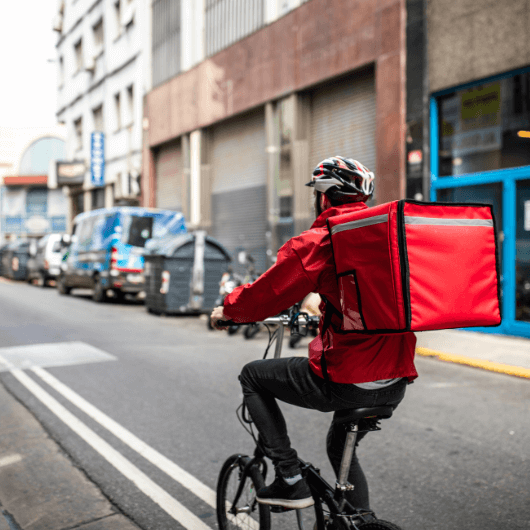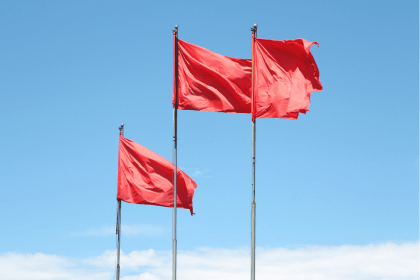
How to make restaurant food delivery profitable
January 4, 2023
Choosing the right delivery software can be difficult. Explore the top tips you should consider when choosing restaurant delivery software!

Restaurants that don’t use delivery software typically capture and fulfill fewer delivery orders.
This is an issue why? Because fewer orders and lower fulfillment rates = less revenue.
Unsurprisingly, restaurants are using technology to increase their profits in response to the rising cost of living. This is as a result of more than 50% of adults confessing that they have already cut back on dining out.
If you are one of many restaurant owners rethinking your business objectives and looking into delivery options to improve customer satisfaction & save money, you’ve come to the right place!
Countless delivery software platforms have entered the industry since 2020. As a result, it’s difficult to figure out which one is the perfect fit for your restaurant brand.
Having worked with some of the biggest restaurant brands & delivery platforms in the industry, we understand just how tight deadlines are.
Don’t waste your valuable time & money searching for delivery software that’s only palatable.
Continue reading to learn the best strategies and warning signs to look out for when selecting delivery software for your restaurant.
Food delivery management software isn’t as scary as it sounds. It simply provides the retail & hospitality industry with web-based tools to market, manage, monitor, track and fulfill delivery orders.
By using this technology (that often incorporates automation) businesses typically have more efficient delivery operations. They also benefit from having a greater opportunity to increase their delivery volume, fulfill more orders and expand their delivery areas.
However, like people, no two software solutions are the same. And if you’re a restaurant business delivering on-demand hot food to hungry customers, the solution that will work for you, may not work as well for others.
Choosing the best food delivery software for your business starts by looking for a solution designed for restaurants.

We have come a long way from customers ordering delivery over the phone.
The digital capabilities of restaurant delivery have changed the game entirely. In fact, nearly 70% of restaurants reported to Restaurant Dive that they use multiple technologies to increase their delivery options.
But what percentage of this number simply jumped on the delivery bandwagon way back when? And how many restaurants are using generic delivery software?
Having demoed with hundreds of restaurant owners looking for an alternative solution, the answer is simple. A hell of a lot.
This brings with it its own complications such as:
In order to find the right delivery solution for your business, consider the advantages of using software designed for restaurants. Particularly if you are a Cloud Kitchen or Dark Kitchen operator!

Using software designed for restaurants…
1. Aids planning & forecasting:
Trader Joe’s may deliver more orders than your restaurant on a weekly basis, but they’re not delivering hot food.
Using feature-rich delivery software tailored specifically to the restaurant industry will help you identify:

2. Increases operational efficiencies & is more profitable:
Cannabis dispensaries don’t have to worry about operational efficiencies as much as on-demand food delivery does.
The delivery time window in the restaurant industry is painstakingly short and must be optimized efficiently.
Using software tailored for restaurants offers a better end-customer experience by decreasing delivery times. It also enables you to automatically assign jobs to delivery drivers based on specific rules you decide to set such as…
– basket size
– distance to the restaurant
– orders containing restricted items
And who knows? You might even get better delivery rates from third-party delivery fleets such as DoorDash Drive by using software specifically designed for restaurants.
Learn more about low-cost delivery fees and book a free demo with our team.

In order to make the right decision, consider asking the following questions to your potential new delivery management provider.
1. Does their solution have good ratings?
Software comparison sites are a great place to start. They are trustworthy and reliable, and typically offer a transparent overview of tech companies. Consider their ratings on Capterra or Trustpilot.
2. Do they have client reviews from businesses with a similar USP?
If they care about your industry, their case studies should be focused on other restaurants’ experiences & successes.
By working with customers with a similar USP to you, they are more likely to understand your pain points and be able to offer several solutions as a result.

3. Can they produce key statistics and real-time metrics around features other than delivery time estimation?
Make sure they offer actionable insights from previous clients. Inquire about;
If they can’t move the needle on these metrics, they may not be the one for you.
4. What other key features do they offer?
If they offer advanced food-focused features, fantastic!
Ask if fleet sharing is optional or if you can customize delivery tracking links.
The ability to share fleets across multiple locations will help you to outsource orders when you reach internal capacity and tracking links will improve communication between you and your customer.
In addition, ask if they can combine multiple orders in the same area to increase efficiency.

5. Do they work with food tech integration partners/delivery partners?
Partnering with other industry providers is a major win. If they have relationships with the big players, they have likely been put to the test and met the highest criteria possible.
This means quick and seamless onboarding without any major tech requirements needed for your restaurant brand.
Are you a little unsure of who these key industry players are? See our list of trusted integration partners to get a better idea!
6. What sort of customer service do they offer?
If they offer a dedicated account manager that understands the pain points of the restaurant industry, you’re in the clear.
Your AE can be your advocate and they are open to hearing customer feedback, meaning they want you to succeed.

7. YOU may be their customer, but do they think about YOUR customer?
Your customers’ satisfaction is your restaurant’s number one priority. In order to ensure happy customers, you need to improve their digital experience.
Ensure they offer great resources and don’t be afraid to ask them how their software can improve this.
Pay particular attention to if they;

Be aware of the following warning signs when choosing a delivery software provider for your restaurant.
1. They are not transparent about pricing
Many delivery software providers will offer a subscription service at a low-cost rate. However, they may not tell you about associated overhead costs such as capped fulfillment levels.
They may also charge you to add drivers/dispatchers to your account without your knowledge.
2. They are not focused on restaurant delivery
Many delivery solutions cater to different industries including retail & cannabis. They attempt to enter the restaurant industry because it is estimated that online food delivery revenue will reach $0.91tn this year, which will give them a high return on investment.
If they’re not focused on restaurant food delivery, you’ll be back to square one within the year.
Major red flag.

3. They don’t offer a wide range of delivery coverage
If they don’t partner with different delivery service providers, they don’t care about hot food delivery.
How the food is delivered is just as important as how fast it was delivered.
Working with a wide variety of delivery providers will ensure that your restaurant gets the chance to experiment with delivery fleets. This means you can benefit from using the highest-rated drivers in your area to ensure the food is delivered the way it should be. Fresh and hot.
4. They don’t produce content-rich resources
If they don’t offer alternative ways to help you grow your delivery channel, they may not be the right option for you.
By providing educational content such as videos, eBooks, and webinars, they likely care a lot more about seeing your brand succeed!
Make sure they have your best interests at heart by asking them what resources and support they offer and what their product roadmap looks like.
If they don’t plan to build delivery features designed for restaurants, then just like pineapple on pizza, you’re not meant to be.

To summarize, the tech industry can be difficult to navigate. Finding the right software for restaurant delivery can be even harder.
Begin your journey by analyzing your delivery channel to identify where you need help.
Make sure to take the time to understand the tech space a little bit more. This will stand to you in future evaluations too – delivery robots are next after all!
Only spend time trying to source solutions tailored to the restaurant industry and ask lots of questions.
Remember, with a whopping recession on the way, many customers are choosing to dine at home this year. Having landed on this post you are clearly in the right place at the right time.
So, what delivery software solution will you choose?
Take a quick demo of our solution to see if we’d be a good fit!
Deliver more for your customers with delivery management software that automates dispatch, improves customer experience.

January 4, 2023

September 4, 2022

May 1, 2023